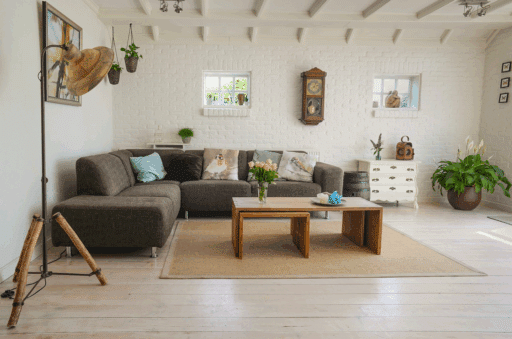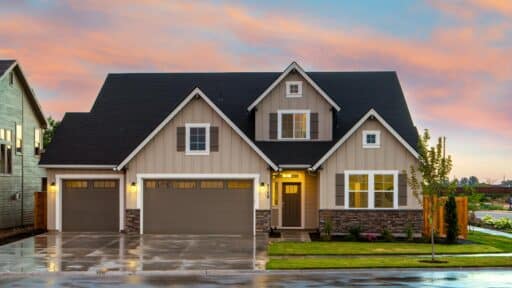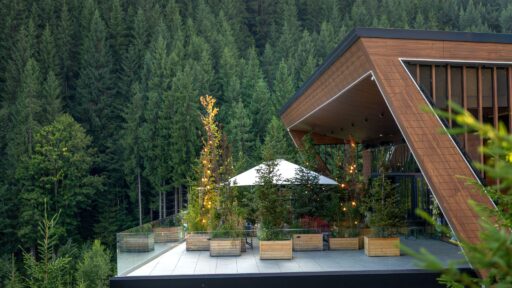Dreaming of expanding your living space, but your bank account says no?
17% of homeowners are currently remodeling their houses with the goal of adding a home addition. But here’s the thing… for most people who dream of home expansion, the vision includes major construction projects that take over the house and empty out the bank account.
It doesn’t have to be this way.
Homeowners looking to expand their space have several smart, cost-effective options that require minimal construction, maximum use of what you already have, and very little spent savings.
Here’s what you need to know:
- Why home expansion and renovation projects are surging this year
- Top budget-friendly home space expansion ideas
- Smart planning tips to keep costs manageable
- DIY vs professional: Making the smart call
Why home expansion and renovation projects are surging this year
Let me tell you something that most people don’t realize…
The crazy housing market is the major reason people are holding onto their homes and renovating them instead of moving. With mortgage rates remaining high and home prices still above where they were a few years ago, it just doesn’t make sense to buy a new home when you can upgrade your existing one.
A study by JD Residential found that home improvements and construction projects that expand the existing living space of homeowners have increased as more and more people are choosing to renovate their homes rather than buying a new one. It makes perfect sense, when you consider how much it would cost to buy a larger home.
But here’s where most people get it wrong…
Homeowners imagine building an addition to their home. Or tearing out a wall and taking over the room next door. These are huge projects with huge budgets and many months of building in their wake. The truth is, there are several highly cost-effective approaches to home expansion that won’t hit the budget too hard.
Converting existing space: The budget-friendly home expansion winner
If you ask me, the cheapest way to gain more living space is to convert the space you already have.
Basements, garages, and attics often provide homeowners with an unexplored wealth of usable square footage. Let’s take a closer look at some of the most popular conversions and why they’re so much cheaper than you might think.
Attic conversions
Attic conversions are a great value for money as the floor, walls, and roof structure are already there. The main expenses include insulation, floor covering, windows, electrical wiring, and heating and air conditioning extensions. There’s no change in the footprint of your house, so planning permission requirements are much less.
Basement finishing
Do you have an unfinished basement? Stop right there. You have a pot of gold you’re not even mining. Finishing a basement is a lot cheaper than building an addition. Foundations and structural walls are already in place.
Don’t believe me? Here’s the proof…
Basement conversions usually cost around 30% to 50% less than an addition of the same square footage.
Garage conversions
Converting your garage is one of the most cost-effective of all the expansion strategies. Foundations, walls, and roof are already there. You’re mainly adding insulation, interior finishes, and climate control.
Bump-outs: Small additions with a big impact
Have you heard of bump-outs? It’s a small addition project that extends a room by a few feet. Bump-outs can have a huge impact on a room’s function for as little as 50-70% of a traditional addition’s cost.
The power of reconfiguration
You’re about to discover something that the majority of homeowners don’t…
Sometimes you don’t need more space. You just need to use your existing square footage more wisely. Clever reconfiguration of your home’s layout can open up your house and make it feel much larger. Without adding a single additional square foot.
Do you have any walls you could knock down to open up a floor plan? Is there a chance to combine small rooms to create larger ones? Could you add built-in storage? Clever reconfiguration can transform your home for a small fraction of the cost of building additions.
Outdoor living spaces: Inexpensive square footage
If you want to have more usable space without going through indoor construction work, move outside. Outdoor living spaces like a covered patio, deck, or screened porch are 60-80% less per square foot than indoor extensions.
Smart planning: how to keep home addition costs manageable
Set a realistic budget
By mid-2025, home improvement spending in the U.S. is expected to reach $477 billion. And 80% of home improvement projects overran their original budget by at least $500.
Set a 15-20% contingency buffer on top of your original budget. Construction projects often throw up unexpected expenses.
Get multiple quotes
Get at least three estimates from multiple contractors. This gives you a good range for comparison and helps when it comes to negotiating.
Choose materials wisely
Use premium materials as accents and splashes of luxury, while choosing quality mid-range options for flooring and bulk areas. It delivers a high-end look and feel without the high-end price.
DIY vs professional: Making the smart choice
Research found that over 60% of homeowners opted for a do-it-yourself solution in their homes last year. But here’s the thing… a do-it-yourself approach doesn’t always save you money, as many homeowners find.
DIY approaches work well for simple cosmetic improvements, painting, basic carpentry work, and garden landscaping. Structural modifications, electrical and plumbing work, roof and foundation projects are better left to the professionals.
Professional work is often more expensive, but DIY workmanship mistakes can be far more costly. Re-doing work to building code standards because you didn’t get the right permits can cost you thousands of dollars.
Permits and regulations: Don’t cut corners here
Some homeowners opt to skip getting permits in order to save money. This is the single most expensive budget-cutting mistake that a homeowner can make.
Permit fees are always far cheaper than the costs associated with rectifying unpermitted work later. From denied insurance claims, to code enforcement issues, to problems when it comes time to sell your home, the list of headaches and costs can be enormous.
Maximizing space with smart design
A well-designed space can make average square footage seem larger than it really is. Use lighter colors, larger windows, space-efficient furniture, and mirrors to create depth and space. These choices may not cost you any extra, but will have a huge impact on the feel of your expanded home.
Financing your home expansion project the smart way
Home equity line of credit (HELOC) provides flexible access to funds with low-interest rates. You only pay interest on the amount of money you use.
Home equity loans offer a one-off lump sum at a fixed rate and can be a great option when you have an exact cost in mind.
Personal savings are of course the best option if you have enough saved up. It eliminates interest and offers the best long-term value.
Steer clear of high-interest credit cards for large projects.
Common budget-busting mistakes to avoid
- Underestimating costs: Always build in a contingency buffer and anticipate everything costing more than estimated.
- Cutting corners: Don’t skimp where you need to invest properly in structural elements and weatherproofing.
- Ignoring future needs: Design and plan for flexibility. Your home office might be someone’s nursery in a few years.
- Forgetting about systems: HVAC, electrical and plumbing system extensions need to be budgeted for from the start.
- Skipping professional advice: A few hundred dollars for professional consultation will save you thousands in mistakes.
So what’s next for your home?
Home expansion and home additions don’t require massive budgets and months of building activity. The strategies outlined above prove that you can create space in your home while keeping to a realistic budget.
Start by looking at the space you already have. What conversion projects are viable? Can reconfiguration solve your problem?
Set a realistic budget, add contingency funds, get multiple quotes, and choose materials that balance quality and cost. Your expanded living space is closer and more affordable than you might think.








